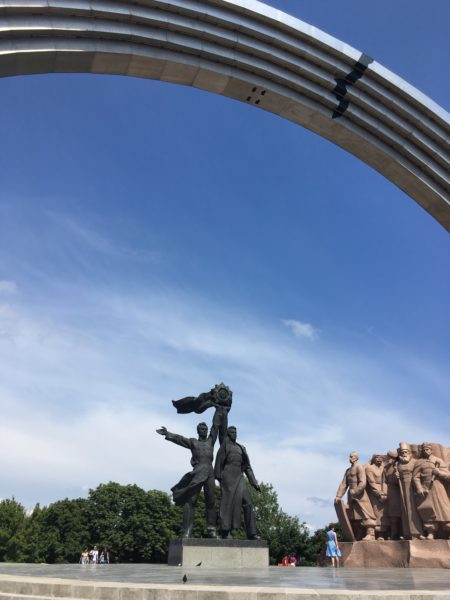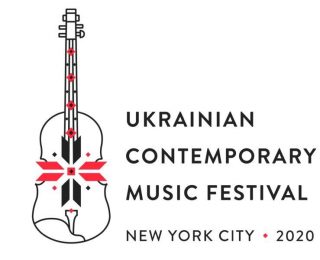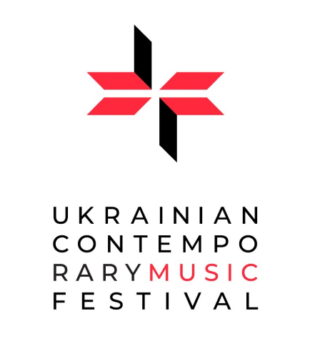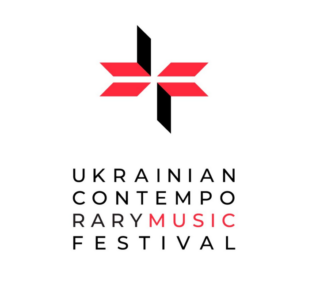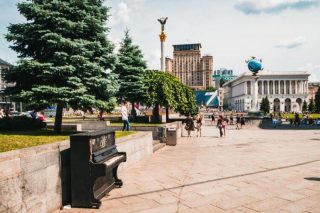Music since Maidan
Beginning in November of 2014, Ukraine was thrust into a three-month struggle, now known as the Revolution of Dignity. At the urging of journalist Mustafa Nayyem, students and young activists began gathering on Kyiv’s Independence Square (Maidan Nezalezhnosti or simply “Maidan”) to protest the government’s turn away from negotiations with the European Union and towards a more Russian-facing foreign policy. The revolution would gather tremendous momentum and culminate with violent clashes between police and protesters, the murder of dozens of civilians—now referred to as “The Heavenly Hundred”—and, ultimately, the unseating of Ukraine’s then-Russian-facing president Victor Yanukovych.
Since the Revolution of Dignity in 2014, Ukraine has been reconstructing, even reclaiming, its public identity, and musical institutions have played a crucial role in this redefinition.
In March of 2013, less than a year before Nayyem’s call to Maidan, the National Symphony Orchestra of Ukraine programmed a concert dedicated to the 100th anniversary of the birth of Tikhon Khrennikov, a Russian composer who served as the General Secretary of the Union of Soviet Composers for over forty years and was responsible for the persecution of artists such as Prokofiev and Shostakovich. It is surely no surprise that, in the years following Maidan, figures like Khrennikov are conspicuously absent from orchestral programming rosters. Rather, what is somewhat surprising is that, instead of turning towards a singular ethnonational tradition of Ukrainian music, the performance repertoires in Lviv, Kyiv and Odesa all show a diversification of the composers and compositions performed. This diversification is based on the country’s transnational history as a meeting place for multiple cultures, religions and ethnicities, that include Ukrainians, Jews, Armenians, Crimean Tatars, Austrians, Poles, as well as Russians.
The most widely visible musical institutions of Ukraine, including the National Symphony Orchestra in Kyiv, the Odesa Philharmonic, and Lviv’s well-known music festival scene, have all pivoted towards a more diverse and transnational musical representation. The performance of works by composers of various ethnic and religious backgrounds has increased: works on Jewish themes in Kyiv, Crimean, Turkish and Greek composers in Odesa, celebrations of the Austro-Ukrainian figures of Galicia in Lviv has filled concert programs since 2014—and have done so, not at the expense of the performance of Russian composers (although Soviet figureheads have all but disappeared).
Some observations about these trends is helpful. Prior to the events of World War II, Ukraine was home to one of the largest Jewish populations in the world—necessarily Jewish Ukrainians have contributed widely to Ukrainian culture and vice versa. While Ukraine is frequently accused of rampant anti-semitism, Ukraine’s far-right Svoboda (Freedom) Party has seen far less success in parliamentary elections than similarly inclined political parties in Austria, Hungary, France and Germany. Yevhen Stankovych, one of Ukraine’s most prominent living composers, has written multiple works on Jewish themes, though he himself has no known Jewish heritage. When I interviewed Stankovych last summer, I asked him what inspired these works, and he told me that his Kaddish-Requiem for Babyn Yar was commissioned in 1991 by Leonid Kravchuk, Ukraine’s first president following the end of the Soviet Union, as part of an effort to initiate a national memory of the massacre. On September 29-30, 1941, the Nazis executed almost 34,000 members of Kyiv’s Jewish population at the eponymous ravine just outside the city in September 1941. With the exception of the post-Maidan performance in 2016, the National Symphony records do not show a performance of this work in the last ten years. But the post-Independence commission combined with the post-Revolution performance suggest the importance of this narrative in moments of Ukrainian redefinition.
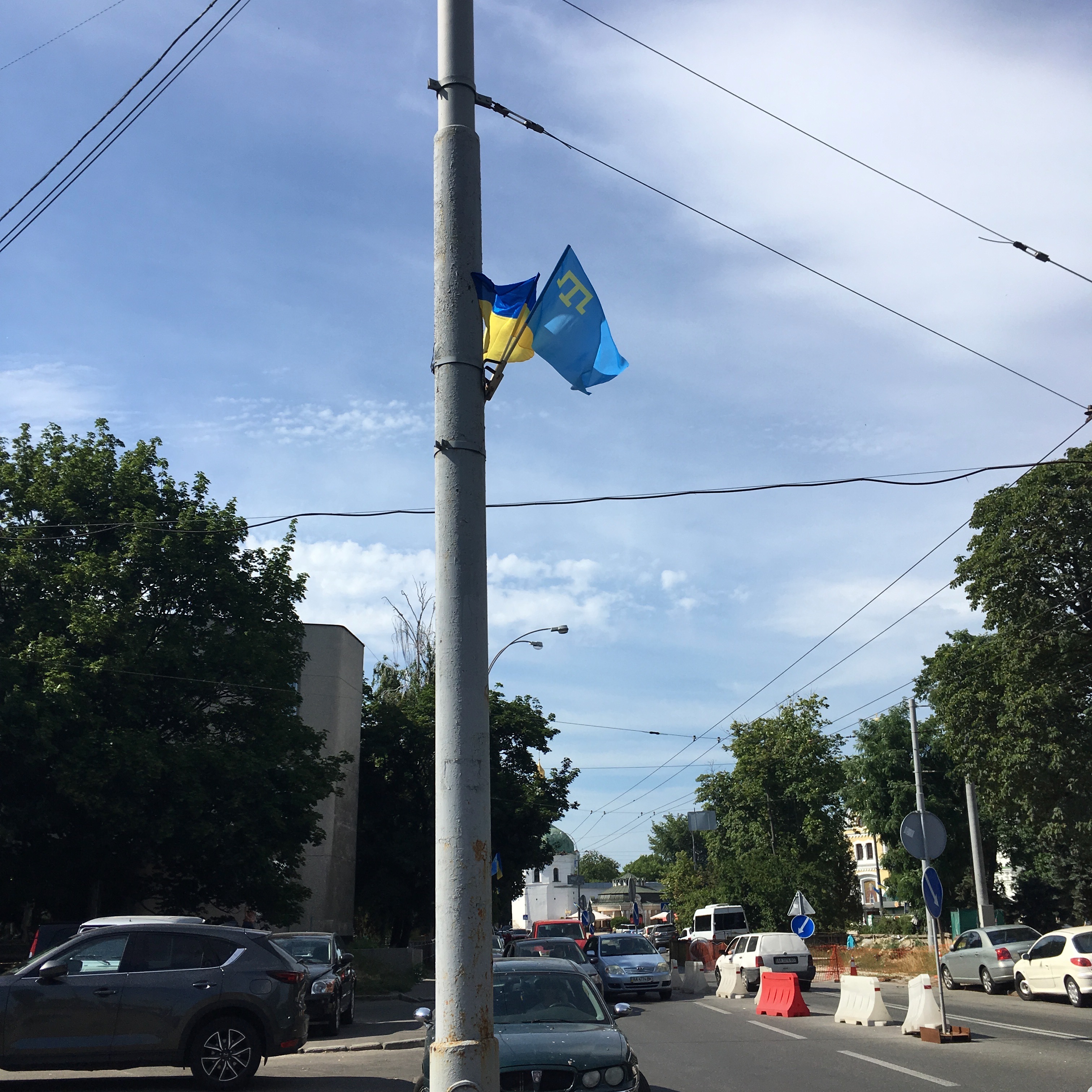
Similarly, Ukraine has long been home to the Tatars of the now-annexed region of Crimea, and the Tatars have become an important part of Ukraine’s cultural identity. The Turkic Muslims who have resided in the peninsula since the 13th century were not always considered an indispensable element of Ukraine’s diverse makeup. But since the annexation in 2014, Kyiv has welcomed many internally displaced Crimeans fleeing their homes, and an annual celebration of the community in the capital sees the country’s blue and yellow national flags replaced with the flag of the Tatars, a blue background featuring the golden tamğa, a symbol of the Crimean people. From Jamala’s 2016 win at Eurovision to the Odesa Philharmonic’s performance of Alamdar Karamanov’s Crimean Overture in 2014-15, Crimean music has also become a part of the Ukrainian canon.
The historical diversity of Ukraine, which includes all of these groups, may be an appealing guide for musical programming, in part because it sets the identity of the Ukrainian nation apart from Russia, uniquely beyond the boundaries of the country’s historical moniker “Malorussia” or “Little Russia.” For the first time, perhaps, since Ukraine's independence from the Soviet Union, an extreme diversity of people have identified as Ukrainians and are similarly recognized by their compatriots as such.
“Following the work of Benedict Anderson,” musicologist Brigid Cohen writes, “it has become commonplace to recognize the nation as more than a territorial division or political entity but as an imagined community that commands ‘profound emotional legitimacy’ through its cultural symbols and habits. […] The musical institutions and repertoires that elaborate these national visions include far more than merely those with explicitly national or nationalist programs. Rather, concert halls, opera houses, and their repertoires have themselves stood as testaments to the cultural lives of their nations.” [1] In addition to the broadening of Ukrainian civic identity and recognition of the country’s historical transnationalism in the years following Maidan, Ukrainian music has also tended towards greater participation in contemporary music on the cutting edge of compositional trends.
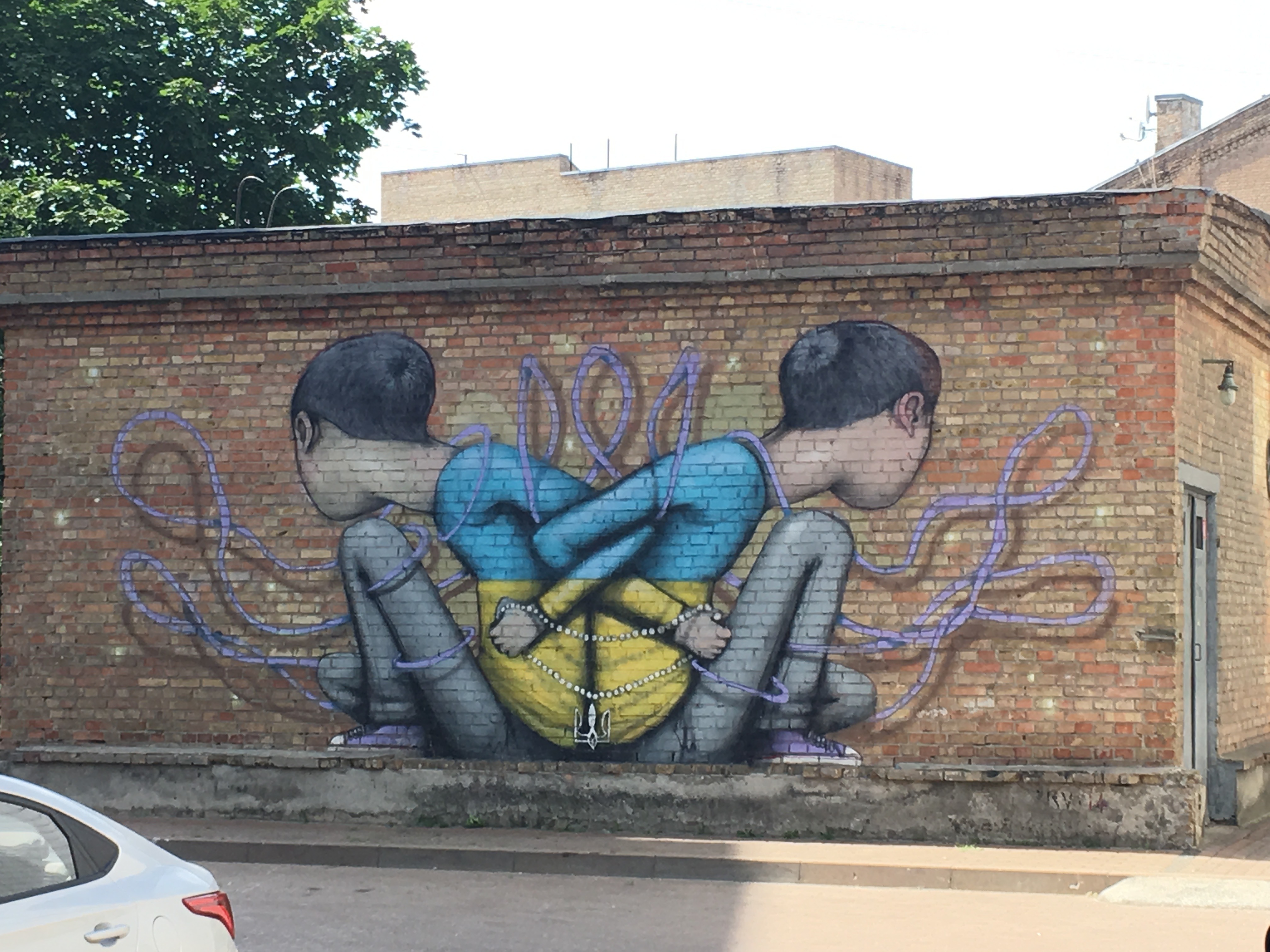
The Odesa Philharmonic Orchestra and the National Symphony Orchestra of Ukraine in Kyiv both include significant portions of contemporary music in their annual programs, a trend that has been increasing since 2014. Not only are many of the Ukrainian composers programmed still living, but both orchestras have also included in their repertoires the works of living composers from other parts of the world, acting as a kind of platform for new music. The festival culture of Lviv has always been characterized by experimental new music, such that even LvivMozArt, a festival as rooted in tradition as one named for a member of the famous family, expends a significant energy performing the new music of young Ukrainian composers. The longest-running festivals in Lviv, many dating from the early 1990s, include the Virtuoso Festival, Contrasts New Music Festival, Vox Electronica, the Lviv JazzFest, and the Festival of Early Music, which frequently juxtaposes old works with very new ones. One particularly striking example of the 2019 Festival of Early Music was a concert by Kyiv bassist Nazar Stets, who composed his own fusion work that combined a bass arrangement of Bach’s solo cello music with works by Stefano Scondanibbio and Salvatore Sciarrino.
It’s not entirely clear what has inspired these changes—many Ukrainians are adamant that the academic institutions, the established houses of musical power, have not responded at all to the events of 2014. As is often the case, though, distance can provide some clarity and from here, it seems, Ukraine’s public identity is shifting. Andreas Kappeler has posed important questions about what a “Ukrainian history” means, tracing shifts in historiographic trends from ethnonational to multiethnic to transnational. Perhaps the version of Ukraine that its most visible art music institutions are presenting—as a transethnic and transnational space as well as a cosmopolitan and intellectual center—can help to guide new approaches to understanding Ukrainian identity.
The Ukrainian Contemporary Music Festival
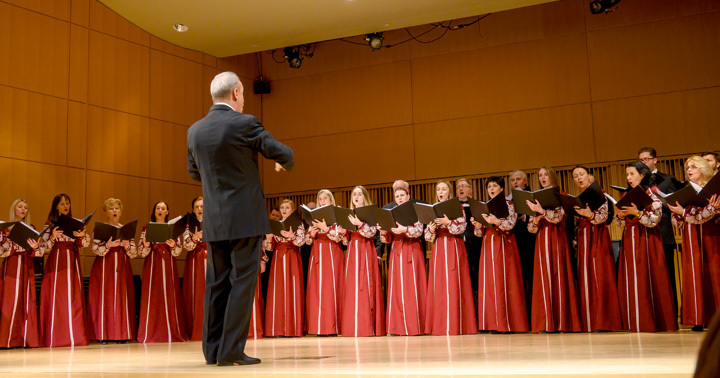
With the support of the Center for the Humanities I spent the summer of 2019 in Ukraine. I travelled to Kyiv and Lviv to undertake a study of how classical music institutions and programs had changed in the five years following the Revolution of Dignity. While I was there, I interviewed composers, music critics, professors and performers about their sense of Ukraine’s musical response to the events on the capital’s Independence Square half a decade earlier. What I could not have known at the time was that while I was wandering through Kyiv, awed by the world’s deepest (and incredibly beautiful) subway system, drinking cappuccinos in hipster cafes, and talking about the Ukrainian contributions to contemporary music, associates of President Trump's personal attorney, former New York City mayor Rudy Giuliani, were engaged in a series of calls and contacts with Ukraine's new president, Volodymyr Zelenskyy.
While this series of events had little bearing on my research, it has recently thrust Ukraine into the spotlight of American politics. Despite the ubiquity of Ukraine in the American news media, the average American does not know where Ukraine is, what language Ukrainians speak (today, it is largely both Ukrainian and Russian), and what artistic contributions Ukraine has made and continues to make. Though the timing of this project was merely serendipitous, both the support of the Center of the Humanities and the increased attention on Ukraine, transformed my research into not only an academic study of Ukraine's musical landscape but also the urgency of sharing Ukraine’s contemporary music with the broader American public. Ukraine’s recent presence in the news has been understandably reduced to the site of shady backroom deals and pushes for illegally obtained information for political ends. But Ukraine is more than this, and while Ukraine is on the tongues of the American public, I sought to show a different side of what the country offers the world, what progressive, creative and exciting projects are also a product of Ukraine.
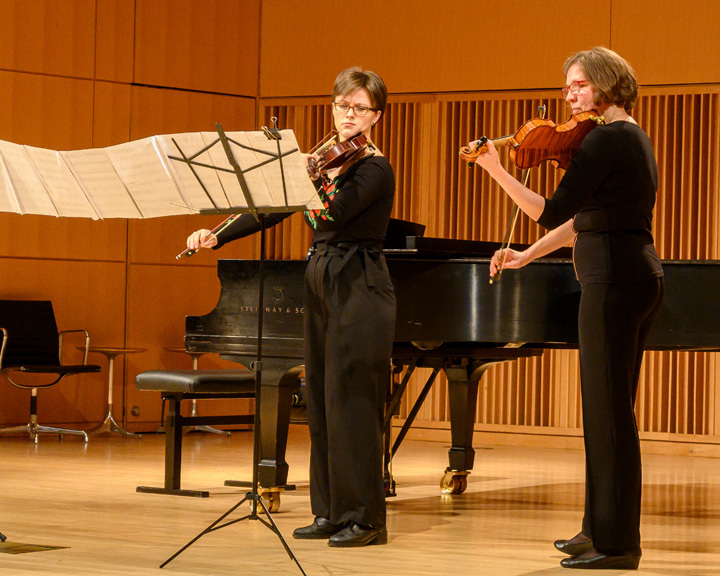
The first Ukrainian Contemporary Music Festival took place in New York City from February 28 to March 1, bringing scholarship on Ukrainian culture and music together with performances of living composers, and spanning the city from the Graduate Center’s Elebash Hall to the East Village’s Ukrainian Museum.
The festival that has resulted from my research is the product of a partnership between myself and the Kyiv-based composer and composition professor, Ludmila Yurina, who teaches at Kyiv’s central music academy. The vision for the event was to create a platform for sharing with New York City publics the recent cultural history of Ukraine and the ways in which its music has responded to social and political events. The first day of the festival, hosted by the Center for the Humanities, introduced not just the history of Ukraine since its 1991 independence, but also what was happening in music, art, and literature during the twilight of the Soviet period. A roundtable conversation with scholars of literature, fine arts, and music explored both similarities and divergences between these fields, while demonstrating Ukraine’s immense cultural contributions. The concert that followed this roundtable featured the music of some of Ukraine’s most well-established composers. The selection of works that was performed featured chamber music, art song, and choral music, showcasing the diversity of Ukrainian art music from the lyrical modernism of Virko Baley to the new folklorism of Myroslav Skoryk and Yevhen Stankovych.
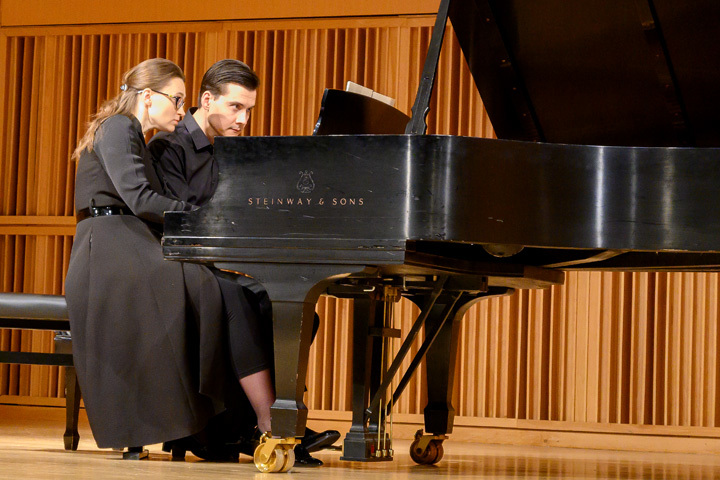
Following this introduction to Ukrainian artistic culture, the second day concerned the topics of Ukrainian music and revolution, spanning the works of early Soviet composer Nikolai Roslavets (a figure frequently mischaracterized as Russian), the postmodern and polystylist composer Valentyn Sylvestrov, and those works written in the wake of the events of 2014. A performance of these works followed a panel discussion that featured music theorist Inessa Bazayev, current Guggenheim fellow and musicologist Peter Schmelz, as well as my research on events post-Maidan.
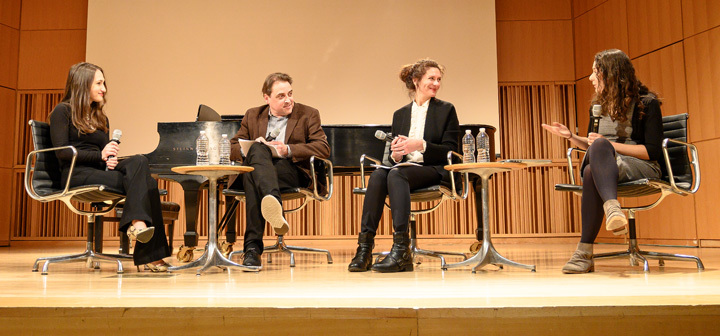
Finally, Sunday’s events allowed us to convene members of three generations of Ukrainian composers to New York City to discuss their work, music education in Ukraine, and their sense of a history of Ukrainian music. Sunday’s events took place at the Ukrainian Museum in the East Village, and a concert of their works, as well as those of their students and peers, followed their roundtable discussion.
Interview with Peter Schmelz
Leah Batstone: Given your work on music in the Soviet Union and in Eastern Europe, could you say a few words about what you see as the relationships between music and politics in this part of the world over the course of your research. Do you see changes over time or between places or genres?
Peter Schmelz: The relationship between music and politics in the Soviet Union and Eastern Europe has always been complicated and sometimes contradictory. Soviet arts policy encouraged all composers to engage with themes and topics of political importance, as well as to make their music comprehensible to as many people as possible. In response, a number of composers, particularly from the mid-1950s and after, studiously avoided any political messaging or easy accessibility. They wrote difficult music as a retreat from politicization, but in the process their music was politicized—listeners heard it as a demonstration of freedom, a type of freedom they could not experience in their day-to-day lives.

The most significant changes have occurred from the 1980s to the present, and particularly in Ukraine. A composer such as Valentyn Sylvestrov, whose music from the 1970s and 1980s enacted a quiet withdrawal (both literally and figuratively), has in the past two decades become increasingly engaged politically in his music. As I discuss in a forthcoming essay about Sylvestrov’s Maidan-related compositions, including his Maidan-2014 for chorus, Sylvestrov responded to the Orange Revolution in Ukraine in 2004 and then, in a more pronounced way, to the Euromaidan Revolution from 2013 to 2014. It is as if breaking free from Soviet-era mental restrictions, the pervasive need to self-censor, took both time and significant external motivating events. In Russia composers have been less direct in their music, although there have been those such as Vladimir Martynov who have announced their approval of Vladimir Putin’s policies.
LB: What inspired your interest in Ukraine? What are your impressions of the state of the scholarship surrounding the arts in Ukraine? What are your hopes for your own work on Ukraine and why?

PS: My interest in Ukraine was an outgrowth of my ongoing research on Sylvestrov’s music--he featured in my first book on Soviet unofficial music during the Thaw, as well as in my forthcoming book on polystylism in his and Alfred Schnittke's music.
I am very happy to see greater attention being paid to music and the other arts in Ukraine. In some ways this is a consequence of the events of 2014, but also a reflection of the more hospitable and encouraging research environment in Ukraine, which has a far less-strict visa regime than, say Russia. In addition to a book I am writing about Igor Blazhkov, Galina Mokreeva, and Sylvestrov in the 1960s, I am collaborating with other music scholars on a volume dedicated to contemporary research on Ukrainian music. I hope to see future interdisciplinary work on Ukrainian music and related topics.
--Leah Batstone
[1] Brigid Cohen, “The Rite of Spring, National Narratives and Estrangement” in The Rite of Spring at 100 (Bloomington, IN: Indiana University Press, 2017), 129-137.
